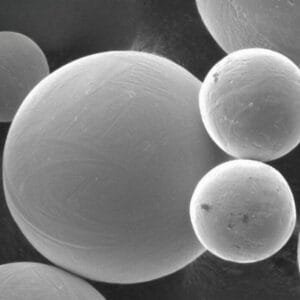Lanthanum Oxide Powder
TFM stands out as a leading supplier of high-purity lanthanum oxide powders, offering Lanthanum Oxide Powder (La₂O₃), Nano Lanthanum Oxide Powder, and Spherical Lanthanum Oxide Powder tailored for advanced material applications. Our lanthanum oxide powders are engineered for exceptional consistency, purity, and performance across a range of industries including electronics, optics, ceramics, and catalysis.
Lanthanum Oxide Powder Features
• Physical Properties: White powder
• High thermal stability and low hygroscopicity
• Excellent dielectric properties
• Application: Widely used in optical glass, phosphors, electronic ceramics, magneto-optical materials, catalysts, and battery electrodes.
Chemical Composition of Lanthanum Oxide Powder
| Grade | La₂O₃ (%) | TREO (%) | Fe₂O₃ (%) | SiO₂ (%) | CaO (%) | Cl⁻ (%) | L.O.I. (%) |
|---|---|---|---|---|---|---|---|
| LaO-1 | ≥ 99.9 | ≥ 99.99 | ≤ 0.002 | ≤ 0.005 | ≤ 0.01 | ≤ 0.01 | ≤ 1.0 |
| LaO-2 | ≥ 99.5 | ≥ 99.8 | ≤ 0.005 | ≤ 0.01 | ≤ 0.02 | ≤ 0.02 | ≤ 2.0 |
| LaO-3 | ≥ 99.0 | ≥ 99.5 | ≤ 0.01 | ≤ 0.02 | ≤ 0.03 | ≤ 0.02 | ≤ 3.0 |
*TREO: Total Rare Earth Oxides
*L.O.I.: Loss on Ignition at 1000°C
Available Sizes of Lanthanum Oxide Powder
| Grade | Size Range | Average Particle Size (D50) |
|---|---|---|
| LaO-1 | -325 mesh | 3–5 μm |
| LaO-1N | Nano (30–100 nm) | 50 nm |
| LaO-S | Spherical, customized | 10–50 μm |
Custom particle size distribution available upon request.
Packaging of Lanthanum Oxide Powder
Packed in sealed plastic bags within iron drums or vacuum-sealed aluminum foil bags. Packaging options include:
• 1 kg, 5 kg, 10 kg bags
• 25 kg fiber or iron drums
• Custom packaging available upon agreement
If you need Lanthanum Oxide Powder for research or large-scale production in electronics, optical coatings, ceramics, or catalyst fields, TFM provides consistent quality, full certification (COA, MSDS), and prompt global delivery.





Reviews
There are no reviews yet.